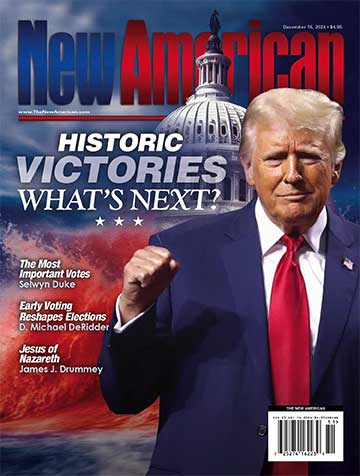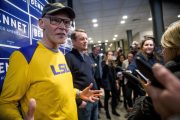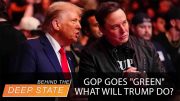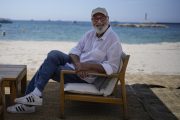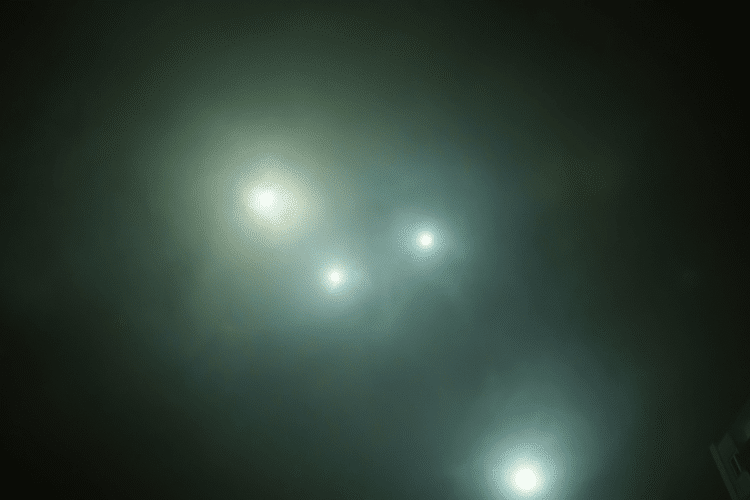
On Tuesday, the House Intelligence Subcommittee on Counterterrorism, Counterintelligence and Counterproliferation conducted a public hearing on the issue of Unidentified Aerial Phenomena (UAP). The chair of the subcommittee, André D. Carson (D-Ind.), proclaimed that it was the first such hearing in over 50 years.
Expert witnesses were Ronald Moultrie, undersecretary of defense for intelligence and security, and Scott Bray, deputy director of naval intelligence. Moultrie and Bray discussed the workings of the Airborne Object Identification and Management Synchronization Group, which has been collecting data on the UAP phenomenon.
The subcommittee met in public for over an hour and resumed in a closed, classified hearing later in the day.
“UAPs are unexplained, it’s true. But they are real. They need to be investigated. And any threats they pose need to be mitigated,” Carson said.
According to Carson, today’s hearing was about explaining what the government was doing in response to UAPs. Carson hoped that the experts could assure the public that the government was taking the issue seriously. The committee also hoped that an open discussion of the issue might help to remove any stigma associated with witnesses who have seen UFOs.
In 2021 the government released a preliminary assessment report, which claimed, among other things, that “UAP threaten flight safety and, possibly, national security.”
The classified preliminary report was obtained by The Black Vault document archive.
“Given the national security implications associated with potential threats posed by UAP operating in close proximity to sensitive military activities, installations, critical infrastructure, or other national security sites, the FBI is positioned to use its investigative capabilities and authorities to support deliberate DOD and interagency efforts to determine attribution,” the report reads.
Carson decried what he called “undue secrecy” regarding UAP.
“Since this is an area of high public interest, any undue secrecy can serve as an obstacle to solving the mystery, or it could prevent us from finding solutions to potential vulnerabilities,” Carson told The New York Times. “This hearing is about examining steps that the Pentagon can take to reduce the stigma surrounding reporting by military pilots and by civilian pilots.”
Of course, the committee also met in closed session, careful not to make too much information public, claiming publicity could endanger ongoing attempts to explain the phenomena or give out national-security secrets. One common occurrence at the public hearing was the witnesses directing more sensitive questions to the closed-door session.
“Our goal is to strike that delicate balance, one that enables us to maintain the public’s trust while preserving those capabilities that are vital to the support of our service personnel,” Moultire said.
One thing the Airborne Object Identification and Management Synchronization Group is not keen on is going back and investigating UFO events that experts have reported on in the past, including the Malmstrom Air Force Base incident, which allegedly occurred in 1967.
“It’s also been reported that there have been UAP observed and interacting with and flying over sensitive military facilities,” noted Representative Mike Gallagher (R-Wis.). “One such incident allegedly occurred at Malmstrom Air Force Base, in which ten of our nuclear ICBMs were rendered inoperable. At the same time, a red orb was observed overhead.”
“That data is not within the holdings of the UAP task force,” Bray said. “We have not looked at that incident.”
Moultrie suggested that the incident could be investigated upon official request.
One member of the panel discussed the possibility of sanctioning what he called “disinformation” regarding the subject of UAPs. Representative Darin LaHood (R-Ill.) questioned whether what he termed “amateur interest groups,” which may contribute “false narratives” or “manufactured” explanations, are susceptible to “legal consequences” for such reports.
“Are there legal consequences, are there examples that you can give where people have been held accountable by this misinformation or disinformation?” LaHood asked.
“I can’t give you any examples where somebody’s been legally held liable for putting something out there,” answered Moultrie.
Is LaHood suggesting that UFO claims be investigated by President Biden’s new Disinformation Governance Board, sometimes referred to as the Ministry of Truth? Wouldn’t such a policy deter people — including military pilots — of coming forward with UAP encounters? Didn’t the committee members say they wanted to de-stigmatize the subject?
